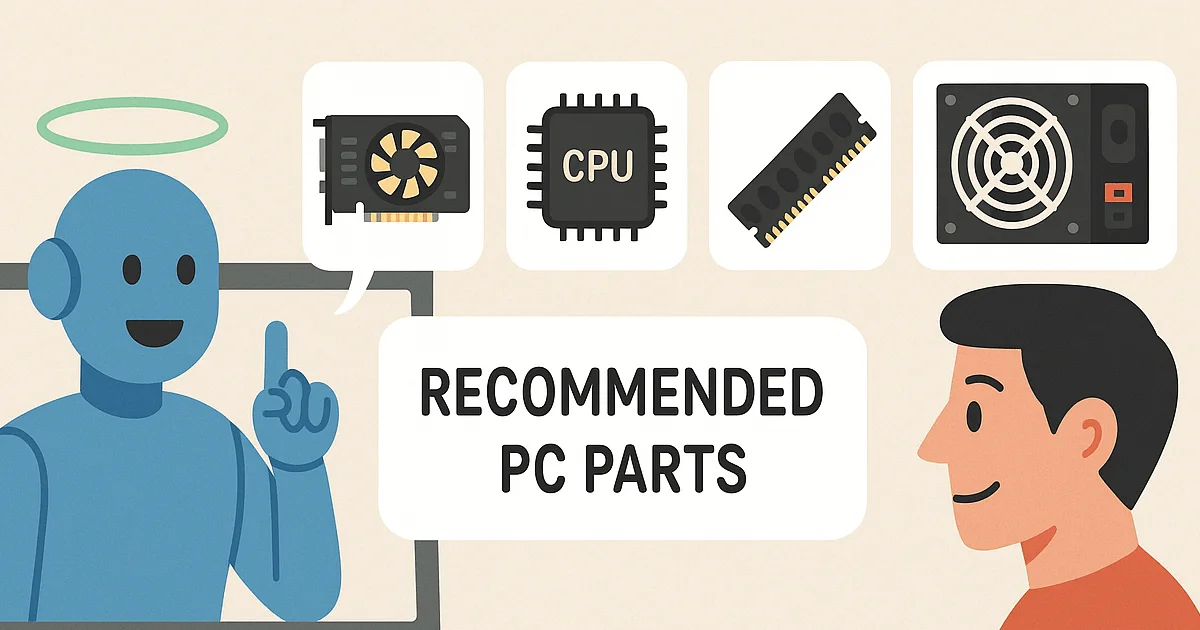
Can Deep-Q networks give a good recommendation
How I trained an AI to recommend PC parts — and it actually beat expert choices at times.

Building a custom PC can feel like navigating a maze blindfolded. With thousands of components, complex compatibility requirements, and rapidly changing prices, even tech enthusiasts sometimes struggle to find the perfect balance of performance and budget. What if an AI could learn to do this better than humans?
That's exactly what we set out to discover.
Picture this: you have $1,500 to build a gaming PC. Should you spend more on the graphics card or the CPU? Will that motherboard support your chosen RAM? Is that power supply sufficient for your build? These decisions create a web of interdependencies that can overwhelm even experienced builders.
Traditional PC recommendation tools rely on static rules — essentially glorified checklists that quickly become outdated as new hardware launches and prices fluctuate. They can't adapt, learn from mistakes, or understand the nuanced trade-offs that make one build superior to another.
We needed something smarter.
Instead of programming rigid rules, we decided to let an AI learn PC building through experience — much like how a human might learn through trial and error, but accelerated thousands of times.
We used Deep Q-Learning (DQL), a reinforcement learning technique where an AI agent learns optimal strategies by experimenting in a simulated environment. Think of it as training an AI to play a complex video game where the goal is building the best PC possible within budget constraints.
We created a custom simulation environment that mirrors the real PC building process:
The AI started knowing nothing about PC building. Through millions of simulated builds, it gradually learned which components work well together, how to balance budgets across different parts, and when to prioritize performance versus cost.
We fed our AI real data from PCPartPicker, one of the most comprehensive PC component databases:
Each component came with detailed specifications: socket types, memory compatibility, power requirements, and performance characteristics. We spent considerable effort cleaning and standardizing this data — teaching the AI to understand that "DDR4-3200" and "DDR4 3200MHz" refer to the same thing.
At the heart of our system is a neural network designed specifically for sequential decision-making:
The network learns through experience replay — storing successful and failed builds in memory, then learning from random batches to avoid getting stuck in local patterns.
The real test came when we pitted our AI against experienced hardware enthusiasts. We generated builds across five budget tiers ($500 to $2,500) and compared them using real-world gaming performance.
We tested each build's performance in four demanding games:
All tests ran at 1080p resolution using industry-standard FPS estimation tools.
The results were fascinating and revealed the nuanced nature of PC optimization:
In the budget category, our AI learned something crucial — the graphics card matters most for gaming. While the expert recommendation included a weaker GPU, our AI allocated more budget to graphics, resulting in significantly better performance:
When both builds used identical GPUs (RTX 4060 Ti), the AI's AMD Ryzen 5 7600 performed identically to the expert's Intel i5-12600K. This taught us that at certain performance tiers, different quality CPUs can deliver similar gaming results.
In premium builds, results varied by game. Sometimes the AI's choices excelled in certain titles while the expert builds performed better in others. This reflects the real-world complexity of high-end PC building — there's rarely one "perfect" configuration.
Through millions of training iterations, our AI developed several sophisticated strategies:
This research demonstrates that AI can learn complex, multi-constraint optimization problems that previously required human expertise. The implications extend beyond PC building:
Our current system focuses purely on gaming performance, but future versions could consider:
While our AI didn't consistently outperform human experts (and we didn't expect it to), it demonstrated something equally valuable: the ability to generate consistently good, compatible builds across different budgets. More importantly, it can potentially improve over time as it processes more data and user feedback.
For newcomers to PC building, this represents a significant step toward democratizing hardware knowledge. Instead of spending hours researching compatibility and performance benchmarks, users could receive intelligent, adaptive recommendations tailored to their specific needs and budget.
The future of PC building might not replace human expertise, but it can certainly augment it — making the perfect build accessible to everyone, regardless of their technical background.
Comments (0)
No comments yet. Be the first to share your thoughts!
Please log in to comment.